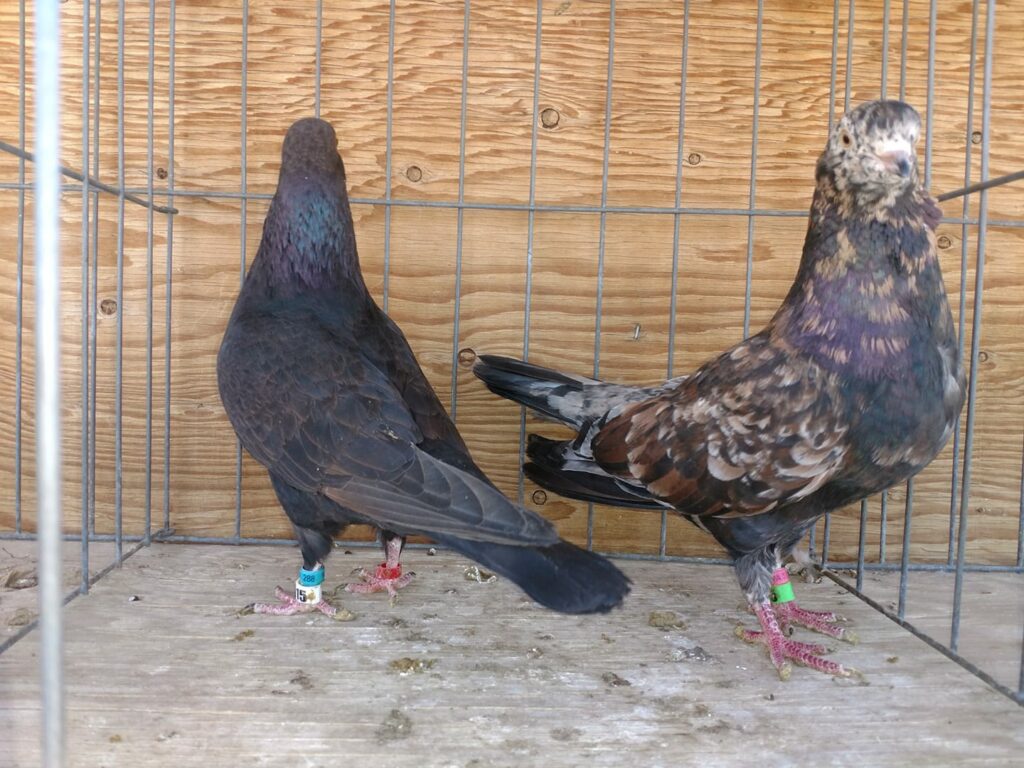The Kite
I think we should include the following on kites from Joe Quinn’s book “The Pigeon Breeder’s Notebook” to help us keep quality kites in the loft to help with keeping quality Torts and Almonds.
Formally Kites are t-pattern which show bronzing in the inner webs of flight feathers. The area showing the most red pigment is in the transitional black to blue areas of the flight feathers, not including the tip.
Matings to wild type produce kites with generally reduced quality of redness. Backcrossed to kite, and some F2 progeny will approach kite parental phenotype.
Further Mr. Quinn discusses the bronze in our Rollers.
Pigmentation Areas Affected – Roller bronze is a weak form of bronzing in both coarse and smooth spread areas. The mutant(s) has little effect on blue areas. The tendency to show bronze in smooth spread areas increases the red of these areas on ash-red pigeons.
Mating to Wild Type – Matings to wild type produces near identical weak bronzes of parental type. Backcrosses and F2 progeny do not seem to increase the expression of this form of bronze.
Discussion – Roller bronze is a weakly
expressed mutant. It is difficult to increase or decrease the amount of red by
selection. The bronze of Rollers
responds very slowly to modification. It
took nearly sixty years of rigorous selection to develop phenotype that
approach the bronze kite of Tumblers for use in almond Roller matings. To the
extent that kite (K) can be easily “graded-up” in Rollers, I have given Roller
bronze a separate classification. Spread
(S) is epistatic to Roller bronze (K)
The final sentence means that Spread will
hide the kite bronze.

This photo from J.P. Isom is a kite and a dark almond. Notice the bronzing in the body color of the kite bird. Many kites show little bronzing except in the flights, so this one is exceptional.
